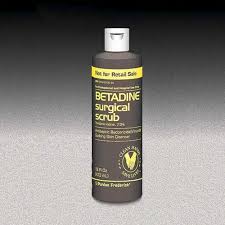In the surgical placement of breast implants, it is important to prevent bacterial contamination and inoculation of the implant as it is placed into the tissue pocket. Besides the risk of infection, bacteria can create a well known biofilm layer on the implant’s surface which can lead to a far more common complication known as capsular contracture. This increase in the thickness of the surrounding scar capsule and its subsequent contracture with loss of softness of the breast and potential external deformity is thought to be caused by a subclinical infection due to bacterial contamination.
As a result every effort during surgery to prevent a biofilm layer from developing on the implant is done including the use of systemic and implant antibiotic irrigations as well as numerous other types of fluid irrigation solutions (e.g., Phase One) One of the most common irrigation solutions used throughout all types of surgical disciplines is that of Betadine, a combined povidine-iodine solution, which has proven effectiveness against both gram-positive and gram-negative organisms. But it has been long believed that it should not be used on breast implants because it may cause the shell to deteriorate and develop premature implant rupture. Such a belief has been espoused in plastic surgery with breast implant surgery as long as I can remember. The implant manufacturers have had it as part of their Directions for Use for decades.
In the May 2018 issue of the Aesthetic Surgery Journal an article was published entitled ‘Betadine and Breast Implants’. In this paper the authors review the history of Betadine use in breast implant surgery and how one of the breast implant manufacturers recently made an FDA-approved change that dropped the Betadine use warning. The relevance of this change is that it allows a previous off-label use of Betadine, which many plastic surgeons use for breast implants, as an accepted antimicrobial and biofilm-preventative intraoperative strategy.


Betadine use with any face or body implant surgery is an effective antimicrobial strategy. It does stain the implant’s surface slightly and creates a sticky surface when it dries. But this is of no clinical consequence. Combining Betadine with antibiotics as a surgical irrigation solution is one that I use to wet and coat the inside of a funnel insertion device for breast implant surgery that goes along with the no-touch technique.
Dr. Barry Eppley
Indianapolis Indiana


